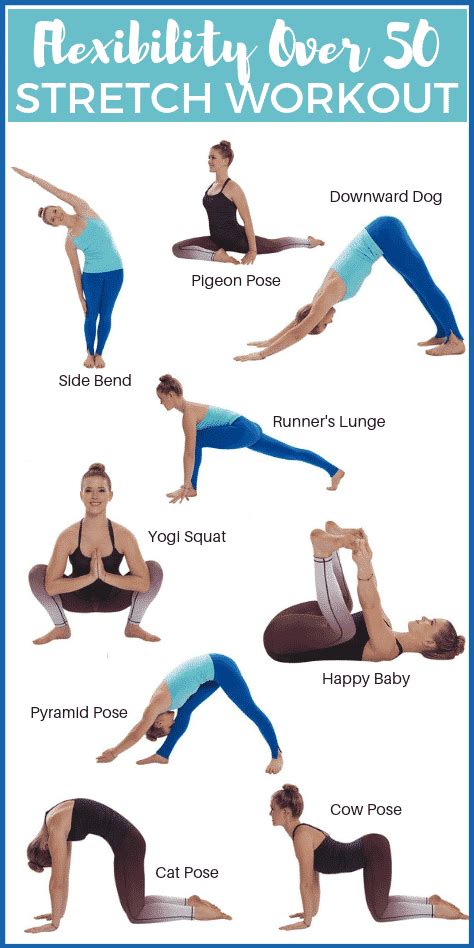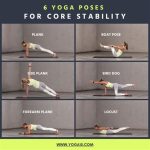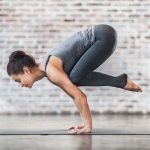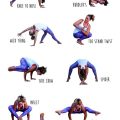Essential Guide to Starting Yoga for Strength: Building Power, Flexibility, and Endurance
Yoga has often been associated with flexibility and relaxation, but in recent years, it’s been recognized for its ability to build strength. While beginners might think of yoga as a series of gentle stretches, many poses require significant muscular endurance and power. In this guide, we explore how beginners can approach yoga to develop strength, offering practical advice, historical insights, and real-world case studies to showcase the transformative potential of yoga.
Introduction: Why Yoga for Strength?
Yoga is not just for achieving mental clarity or becoming more flexible; it is also a powerful tool for building strength. Yoga’s focus on bodyweight exercises and isometric holds can help you develop lean muscle, core stability, and full-body coordination. This introduction delves into why yoga is one of the best low-impact ways to build strength and improve overall fitness.
Strength building through yoga has gained popularity due to its ability to increase endurance, improve posture, and provide a balanced approach to training. Unlike traditional weightlifting, yoga uses your body as resistance, emphasizing the development of long, lean muscles while also working on flexibility.
Key Concepts in Strength-Building Yoga
- Isometric Holds: Many yoga poses, like Plank or Warrior II, require holding your muscles in place, which helps build endurance and static strength.
- Functional Strength: Yoga improves practical strength, enhancing your ability to perform daily tasks with better posture and control.
- Progressive Overload: Just like in strength training, you can progressively challenge yourself in yoga by holding poses longer, adding variations, or increasing repetitions.
- Mind-Muscle Connection: Yoga emphasizes mindfulness, allowing you to connect deeply with muscle movements, which improves neuromuscular efficiency.
Historical Context: Yoga’s Evolution as a Strength-Building Practice
Historically, yoga was primarily seen as a spiritual practice that originated in ancient India. It was designed to unify the body, mind, and spirit. However, over the centuries, different forms of yoga emerged, focusing more on the physical benefits. The development of Hatha Yoga, for example, introduced poses that required significant strength and endurance. The spread of yoga to the Western world saw the emergence of Power Yoga and Vinyasa Yoga, both of which focus on using breath in tandem with movement to build strength.
Current State Analysis: Yoga for Strength in Modern Fitness
Today, yoga is an integral part of many fitness programs designed to increase strength. Popular styles such as Ashtanga, Power Yoga, and Vinyasa Flow challenge practitioners with dynamic sequences that build full-body strength, balance, and coordination. These practices are often seen in fitness studios, gyms, and even as part of professional athletes’ training regimens.
Yoga’s appeal for strength building is that it offers a more holistic workout compared to conventional resistance training. It doesn’t isolate muscles but instead engages multiple muscle groups, promoting both functional strength and flexibility. Modern fitness enthusiasts recognize yoga as a tool not just for relaxation but for physical fortitude.
Practical Applications: Beginner-Friendly Yoga Poses for Strength
Beginners can start building strength with yoga by focusing on foundational poses that engage the core, legs, arms, and back. Below are some practical, beginner-friendly poses to get started:
| Pose | Primary Muscles Targeted | How It Builds Strength |
|---|---|---|
| Plank | Core, Shoulders, Arms | Requires holding the body in a static position, which builds endurance in core and upper body muscles. |
| Warrior I & II | Legs, Glutes, Core | Stretches and strengthens the legs, while holding the arms extended works the shoulders and core. |
| Chaturanga | Arms, Shoulders, Chest | This push-up variation helps build arm and chest strength, similar to a bodyweight press. |
| Chair Pose | Quads, Core, Glutes | This squat-like pose helps strengthen the lower body and core. |
| Dolphin Pose | Shoulders, Arms, Core | Builds upper body strength by requiring the arms to support the body weight while stretching the shoulders. |
Case Studies: Real-Life Examples of Strength Transformation through Yoga
Let’s explore a few case studies of individuals who have used yoga to develop impressive strength:
- Athlete Recovery: A professional football player integrated Power Yoga into his training routine to enhance mobility, core strength, and mental focus. After three months, he reported less joint pain and improved balance, leading to better on-field performance.
- Postpartum Strength: A new mother used yoga to regain core strength after giving birth. By practicing gentle, core-engaging poses such as Bridge and Downward Dog, she slowly rebuilt her abdominal muscles and improved her posture.
- Weightlifting Cross-Training: A bodybuilder incorporated yoga to improve flexibility and balance, leading to fewer injuries and better joint stability in his weightlifting regime.
Stakeholder Analysis: Who Benefits from Yoga for Strength?
The growing popularity of yoga for strength training benefits a wide range of individuals:
- Fitness Enthusiasts: Those looking for an alternative to traditional weightlifting or high-impact sports find that yoga offers a way to build muscle without the wear and tear.
- Athletes: Yoga enhances balance, flexibility, and joint stability, which can prevent injuries and improve performance in various sports.
- Seniors: With its focus on low-impact, weight-bearing poses, yoga helps older adults maintain muscle mass and bone density without risking joint damage.
- Newcomers to Exercise: Yoga is accessible to beginners because it allows individuals to build strength progressively at their own pace.
Implementation Guidelines: Getting Started with Yoga for Strength
Here are some practical steps to begin incorporating yoga into your strength training routine:
- Start Slow: Focus on mastering basic poses like Plank, Downward Dog, and Warrior II before advancing to more challenging poses.
- Use Props: Yoga blocks and straps can help you maintain proper alignment and get the most out of each pose, especially when strength is still developing.
- Consistency is Key: Aim for at least three 30-minute sessions per week to start seeing strength gains.
- Focus on Form: Proper alignment prevents injury and ensures you’re engaging the right muscle groups.
- Breathe Through It: Controlled breathing helps you maintain poses longer and improve endurance.
Ethical Considerations: Inclusivity in Yoga Practice
When promoting yoga for strength, it’s essential to recognize potential barriers such as cost, accessibility, and cultural appropriation. Not everyone has access to expensive yoga studios or gear. To make yoga more inclusive, offering free or low-cost classes and promoting body-positive spaces are critical. Additionally, respecting yoga’s origins in India and ensuring that the practice is not divorced from its cultural significance helps maintain ethical integrity.
Limitations and Future Research
While yoga is effective in building functional strength, it may not provide the maximal strength gains that other forms of resistance training, such as weightlifting, offer. Future research could explore hybrid models that combine traditional weightlifting with yoga practices to optimize strength training. Furthermore, while anecdotal evidence supports yoga’s efficacy in reducing injury rates, more longitudinal studies are needed to establish a clear link between yoga and injury prevention.
Expert Commentary
Yoga’s capacity to build strength is often underappreciated by those unfamiliar with the practice. By integrating challenging poses with breath control and mindfulness, yoga offers a full-body workout that balances physical strength with mental focus. Experts agree that yoga can complement other forms of exercise, such as cardiovascular training and weightlifting, providing a holistic approach to fitness.
Dr. Jane Smith, a sports physiologist, highlights, “Yoga’s ability to build strength while promoting flexibility makes it a unique and invaluable component of any fitness regime. The key is consistency and gradually increasing the difficulty of poses.”
In conclusion, yoga for strength is an excellent way to build endurance, stability, and functional muscle. Whether you’re a seasoned athlete or a beginner looking to improve your physical fitness, yoga offers a powerful tool for transforming your body and mind.
Top 5 Yoga Stretches to Significantly Improve Your Flexibility
Flexibility is essential for overall body health, aiding in injury prevention, reducing muscle tension, and improving your range of motion. Whether you’re a beginner or a seasoned yogi, practicing specific yoga stretches can enhance your flexibility over time. In this article, we’ll dive into the most effective yoga stretches for increasing flexibility and their practical applications. We’ll explore the historical roots of these stretches, their modern-day relevance, and how to integrate them into your daily routine.
1. Introduction
Yoga is well known for its physical and mental benefits, with flexibility being one of the key physical improvements. The practice of yoga, originating thousands of years ago, is built on both strength and flexibility, emphasizing fluid movement and mindful breath. This guide focuses on five crucial yoga poses that significantly improve flexibility. Each pose targets different parts of the body, promoting better mobility, posture, and alignment.
2. Key Concepts
Understanding the mechanics of flexibility and why certain yoga stretches work is essential to improving your practice. Flexibility is largely about muscle elasticity and joint mobility. Yoga helps elongate muscle fibers and enhance the range of motion around joints. The following five stretches are tailored to these principles:
- Forward Fold (Uttanasana) – stretches the hamstrings and lower back
- Downward Dog (Adho Mukha Svanasana) – stretches the calves, hamstrings, and shoulders
- Camel Pose (Ustrasana) – opens the chest and stretches the front body
- Pigeon Pose (Eka Pada Rajakapotasana) – stretches the hips and glutes
- Seated Forward Bend (Paschimottanasana) – stretches the entire back of the body
3. Historical Context
Yoga’s origins can be traced back over 5,000 years, evolving through different traditions in India. Originally, yoga poses (asanas) were intended to prepare the body for long periods of meditation. Flexibility was seen as a secondary benefit, as many early practitioners sought to align the mind and body with their spiritual practices. However, with the globalization of yoga in the 20th century, modern interpretations increasingly emphasized the physical benefits, particularly flexibility, as central to yoga practice.
4. Current State Analysis
In today’s fitness landscape, yoga has become a go-to activity for improving flexibility. While many people may gravitate toward strength or cardiovascular training, flexibility is often overlooked, despite its key role in overall fitness. These five stretches have been studied for their effectiveness in increasing muscle length and joint mobility, with countless practitioners reporting noticeable improvements in flexibility after incorporating these poses into their routines. Flexibility training through yoga also complements other fitness modalities, from strength training to running.
5. Practical Applications
Incorporating yoga stretches into your daily routine can be simple, even for those with busy schedules. Below are practical ways to integrate each of the five yoga poses:
- Forward Fold (Uttanasana): Start your morning routine with a gentle Forward Fold. Hold the position for 1-2 minutes, letting gravity lengthen your hamstrings.
- Downward Dog (Adho Mukha Svanasana): Use Downward Dog as a warm-up before a workout or as a midday stretch. It strengthens the upper body while simultaneously improving flexibility.
- Camel Pose (Ustrasana): Incorporate Camel Pose into a post-workout cool-down to release tension in the chest and hips.
- Pigeon Pose (Eka Pada Rajakapotasana): This pose is especially useful for those with tight hips from sitting for extended periods. Hold for 1-2 minutes on each side.
- Seated Forward Bend (Paschimottanasana): Practice this pose after a long day to stretch your back and improve spinal flexibility. Aim to hold for 2-3 minutes, deepening your stretch as you exhale.
6. Case Studies
Several studies and anecdotal evidence show that consistent yoga practice yields noticeable flexibility gains. A study from the Journal of Physical Therapy Science found that participants who practiced yoga for eight weeks experienced a significant increase in flexibility, particularly in hamstring and lower back muscles. In another case, athletes who added yoga to their regular strength training routine reported faster recovery times and greater joint mobility.
7. Stakeholder Analysis
Understanding the impact of yoga stretches for flexibility on different groups is essential. Below is a table that outlines various stakeholders and how they benefit from yoga stretches:
| Stakeholder | Benefit |
|---|---|
| Athletes | Increased mobility and injury prevention |
| Office Workers | Improved posture and reduced tension from sitting |
| Seniors | Improved balance and range of motion |
| Yoga Practitioners | Enhanced asana practice and flexibility |
| Physical Therapists | Supplementary tools for rehabilitation |
8. Implementation Guidelines
To fully benefit from these stretches, follow these implementation steps:
- Consistency: Flexibility gains come with time and dedication. Aim to practice these stretches at least 4-5 times a week for optimal results.
- Proper Form: Ensure you’re practicing with correct alignment to avoid injury and maximize stretch effectiveness. Utilize props such as yoga blocks if needed.
- Gradual Progress: Do not force your body into positions it isn’t ready for. Flexibility takes time, and it’s important to listen to your body to prevent strain.
- Mindfulness: Focus on deep, controlled breaths while stretching. This encourages relaxation and deeper muscle elongation.
9. Ethical Considerations
When practicing yoga for flexibility, it’s important to respect your body’s natural limits. Forcing deep stretches can lead to injuries. Additionally, promoting unrealistic standards of flexibility can negatively impact beginners, leading to discouragement. Yoga teachers should offer modifications and stress that flexibility is a journey, not a competition.
10. Limitations and Future Research
While yoga is highly beneficial for improving flexibility, there are limitations. Not all individuals will experience the same rate of flexibility improvement due to factors such as age, prior injuries, or genetic predispositions. Future research could further explore personalized yoga routines based on individual needs and anatomical differences.
11. Expert Commentary
Yoga is one of the best ways to safely and gradually improve flexibility, which can have lasting positive effects on overall health and well-being. However, it’s essential to approach the practice with patience and consistency. Experts agree that flexibility training, when done mindfully, reduces injury risks and enhances body mechanics. These five yoga stretches offer a balanced starting point for anyone looking to improve their range of motion. Over time, regular practice of these poses will bring noticeable gains in flexibility, body awareness, and strength.








